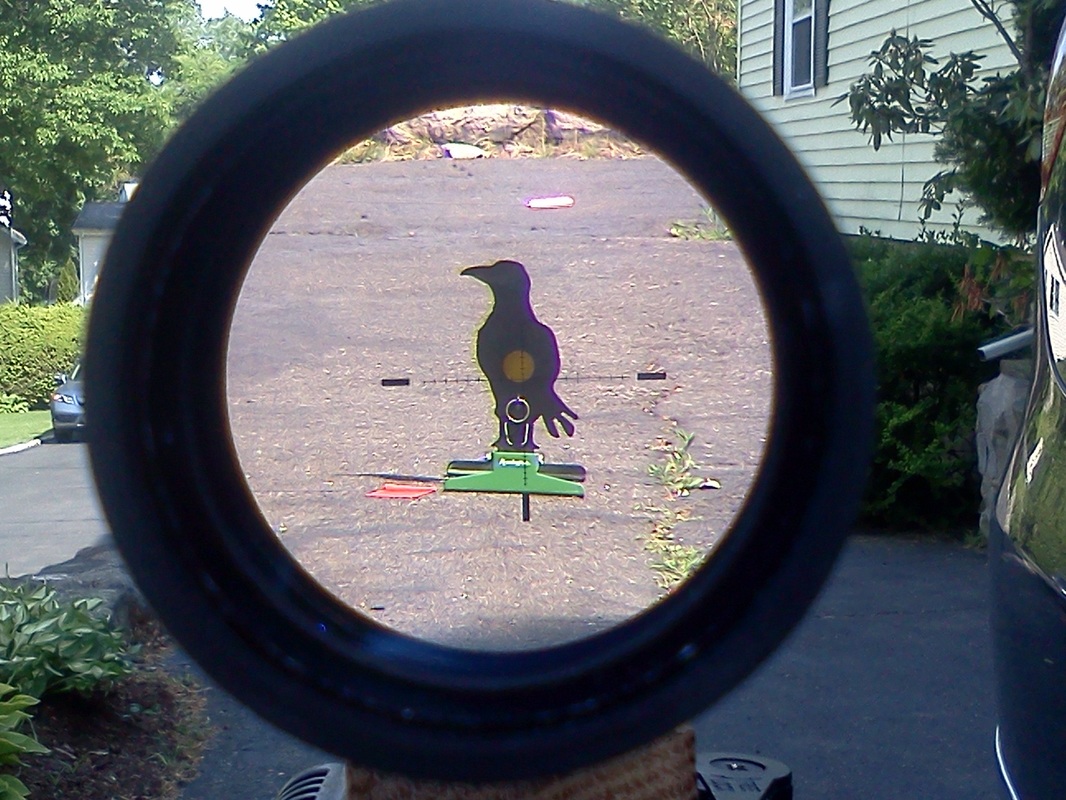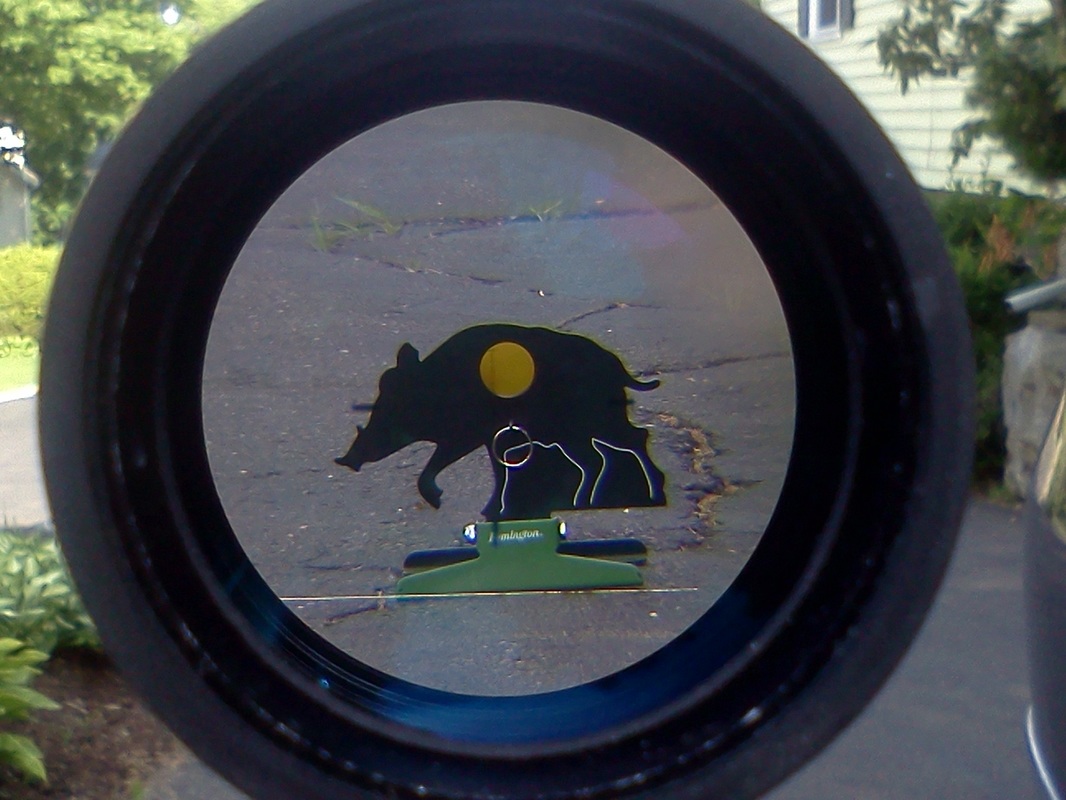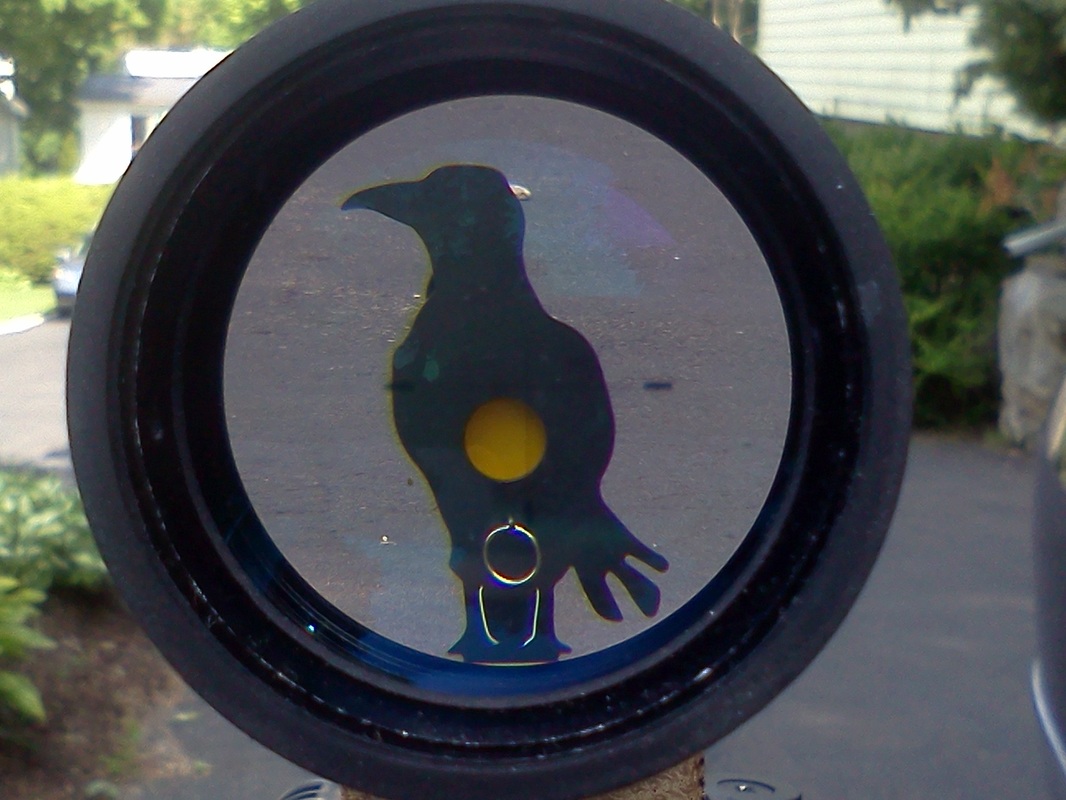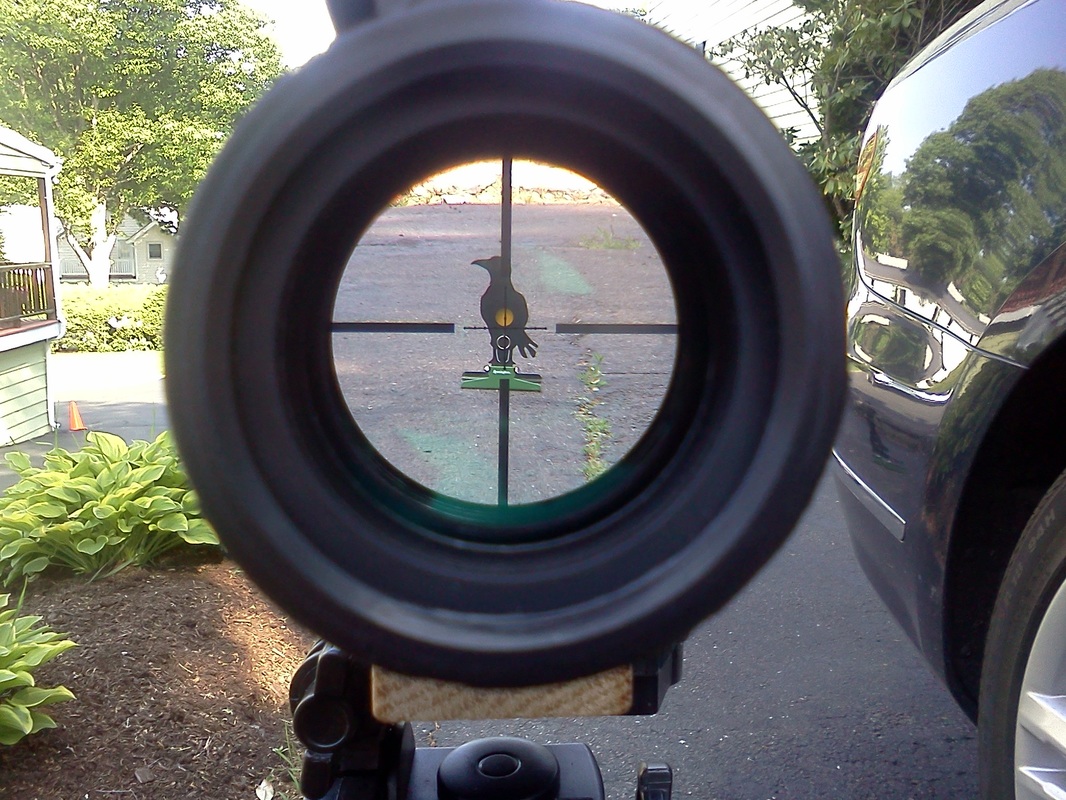My good friend Brian Samson has posted that he thinks using this scope at 12X for the UK version of the 'Hunter FT' game would be a "terrible" idea. He cannot conceive how a 56 mm's objective lens with a 12x magnification can have any depth of field.
I have another good friend that says that one small, concrete, solid, real, test is worth 100 "expert" opinions. He usually refers to me when he says that, so I do not know why he is my friend, ROFL! but he is.
And so, without further ado, let's exemplify in pictures what a professional oriented scope can do:



Now, Brian also comments that a 10X32 would be a better choice to shoot the UKAHFT game. Well, again, let's do a test:
This begs the question: ¿HOW can this be?
As Brian, we ALL know that larger objective lenses make the system "faster" I.E. it reduces the depth of field. And we are sure that small objectives in a scope HAVE to mean increased depths of field, especially at low magnifications. And yet, here we are, pitting a 56 mm's scope set at ALMOST 12X, vs. a 32 mm's scope set at 10X and still, the depth of field is clearly greater / better in the large scope than in the small scope.
¿How do we reconcile THEORY with REALITY?
Well, truth be told, there is NOTHING to reconcile. If you go to my Blog entry titled "How to Understand Riflescopes" you can read the following:
"In order to provide crispness to the image, scope manufacturers insert a "stop" (a metal plate with a hole) at this point. This reduces the stray light bouncing around the internals of the scope and allows the eye to perceive a "crisp" sight picture. It does not diminish light throughput because the image is already a reduced one and it already includes the reticle."
Well, ¿what is crispness of image if not another way of describing "in focus"?
The scope designer has not only lenses to play with, but he can also play with "nothingnesses" (if I may invent a word). Judicious use of the stops, either physical or virtual, is what makes this apparent contradiction possible.
The other objection raised is that even if the scope was in relative focus, there would be parallax, and the aiming error introduced through the parallax error is a detrimental thing.
Well, Yes! But that would be true of ANY scope in ANY setting.
Parallax error under these conditions and restrictions needs to be managed by the shooter pro-actively. IMHO, the best way for most shooters to manage parallax error under these conditions is to set the scope as far forwards as the mounts/rail will allow. This creates a "peep within the scope" sight picture that practically eliminates different eye positions. Most shooters will be able to use this technique.
And here I will end up this note saying that there is a HUGE difference between riflescopes made for "sporting" purposes (even if they are $4000 March's and S&B's) and scopes made for "professionals" (meaning those whose lives depend on their tools). When you are designing a scope to be used in a number of different circumstances, conditions and environments, you endeavour to make a versatile scope. As a designer, the use of the stops becomes important precisely when you want to make this versatility COUNT.
And ¿where would it count more than in the battlefield?
Keep well and shoot straight!
HM

















 RSS Feed
RSS Feed